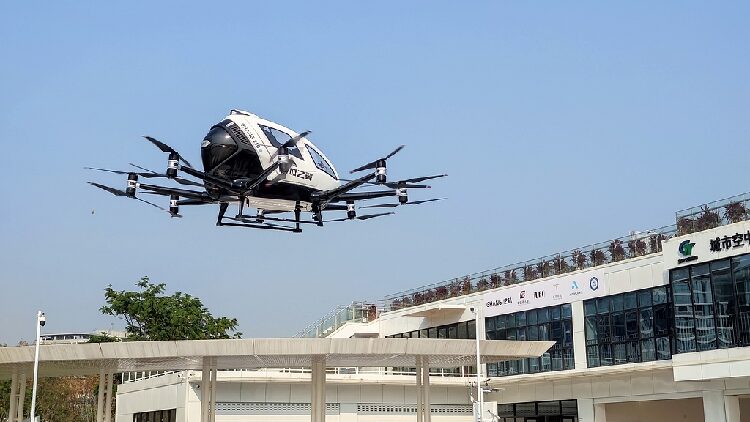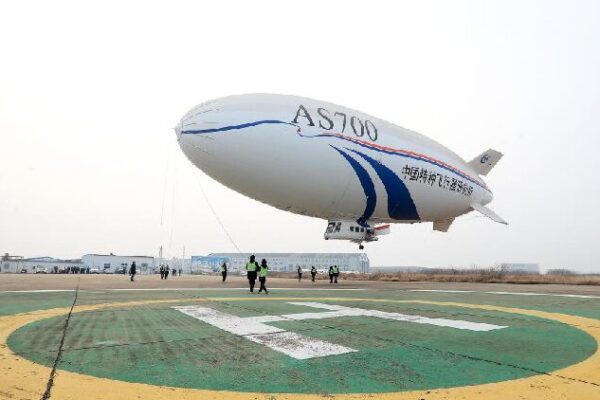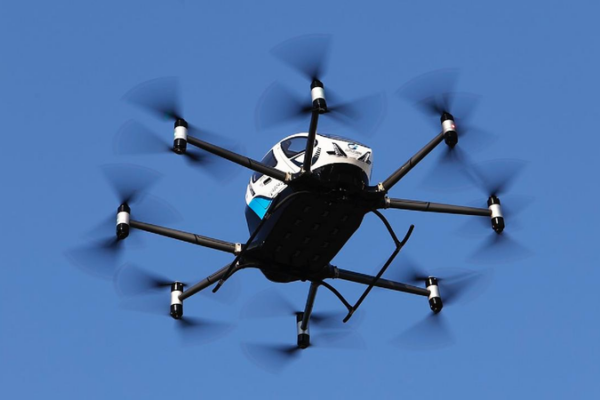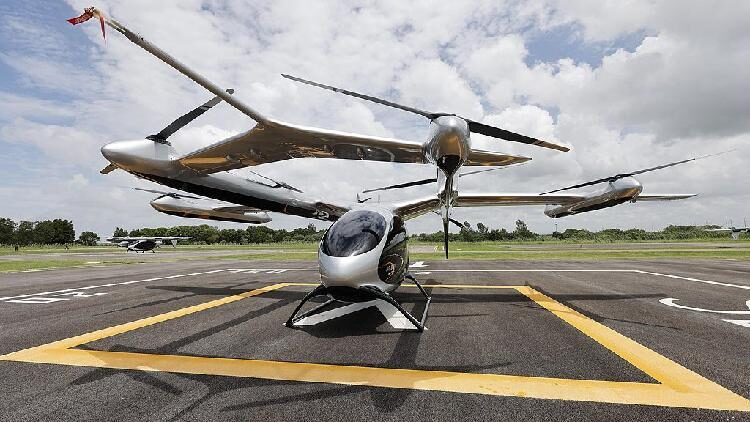China has officially launched the world’s first passenger drone service, marking a groundbreaking moment in urban air mobility. On March 28, the Civil Aviation Administration of China (CAAC) issued the world’s first Air Operation Certificate for a remotely piloted aircraft system to two urban aerial mobility (UAM) companies operated by EHang.
This milestone signals the start of the “passenger era” for China’s low-altitude economy, an emerging ecosystem involving activities and services conducted in airspace below 1,000 meters. Utilizing drones and electric vertical takeoff and landing aircraft (eVTOLs), the low-altitude economy encompasses applications like rescues, surveys, and the transport of goods and passengers.
The EH216-S eVTOL aircraft, operated by Guangdong EHang General Aviation and Hefei Heyi Aviation, is the world’s first passenger-carrying autonomous eVTOL with full certification, including the Type Certificate, Standard Airworthiness Certificate, and Production Certificate. Having completed over 60,000 safe flights, the EH216-S is set to serve urban air mobility, logistics, tourism, and other sectors.
With the new certification, passengers can now purchase tickets for low-altitude sightseeing tours and urban air commuting services at designated operation points in Guangzhou City, Guangdong Province, and Hefei City, Anhui Province. This offers a glimpse into the future of urban transportation, reducing congestion and providing a novel travel experience.
The advancement of the low-altitude economy aligns with China’s vision for future industries. According to a report by the China Electronics and Information Industry Development Research Institute (CEIID) released at the 2025 Zhongguancun Forum in Beijing, the low-altitude economy and general aviation have been identified as key industries by 2035.
“Future industries have become central to global technological competition,” said Pu Songtao, director of the Future Industry Research Center at CEIID. Following strategic initiatives by the Ministry of Industry and Information Technology and other ministries, China’s efforts in this sector have accelerated significantly.
Local governments across China are rapidly developing specialized strategies to foster growth. Beijing has identified over 20 sectors for focused development, emphasizing areas like artificial intelligence and commercial aerospace. Shanghai is cultivating future health industry clusters, while the Yangtze River Delta region is promoting coordinated growth in the low-altitude economy.
The launch of passenger drone services represents a significant step forward in transforming urban transportation and showcases China’s commitment to innovation in the aviation industry.
Reference(s):
China issues first Operation Certificate for passenger eVTOLs
cgtn.com








